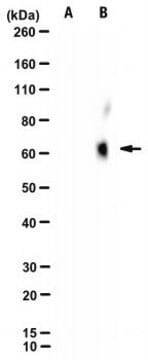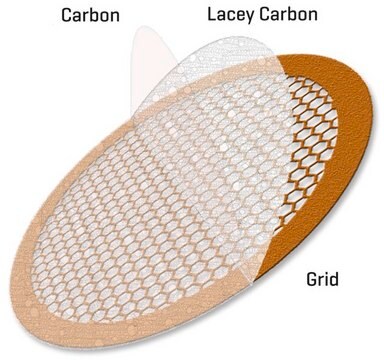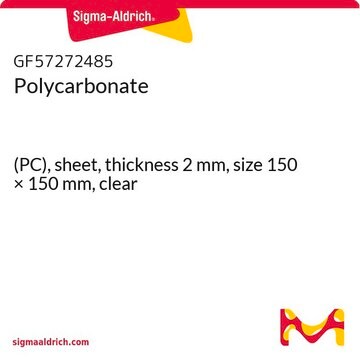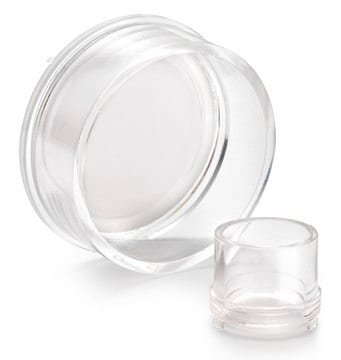MABF3145
Anti-Envelope glycoprotein B Antibody, HCMV Antibody, clone 27-156
Synonym(s):
gB
About This Item
Recommended Products
biological source
mouse
Quality Level
antibody form
purified antibody
antibody product type
primary antibodies
clone
27-156, monoclonal
mol wt
calculated mol wt 101.95 kDa
observed mol wt ~120-140 kDa
purified by
using protein G
species reactivity
virus
packaging
antibody small pack of 100 μg
technique(s)
ELISA: suitable
immunocytochemistry: suitable
immunofluorescence: suitable
immunoprecipitation (IP): suitable
neutralization: suitable
western blot: suitable
isotype
IgG2bκ
epitope sequence
C-terminal half
Protein ID accession no.
UniProt accession no.
storage temp.
-10 to -25°C
Gene Information
vaccinia virus ... HA(3654615)
General description
Specificity
Immunogen
Application
Evaluated by Western Blotting with recombinant HCMV glycoprotein B.
Western Blotting Analysis (WB): A 1:200,000 dilution of this antibody detected recombinant HCMV glycoprotein B.
Tested applications
Immunoprecipitation Analysis: A representative lot immunoprecipitated HCMV Envelope glycoprotein B in Immunoprecipitation applications (Reschke, M., et al. (1995). J Gen Virol. 76(Pt1); 113-22; Meyer, G.A., et al. (2000). J Biol Chem. 275(6); 3857-66; Vanarsdall, A.L., et al. (2008). J Virol. 82(23);11837-50).
Immunocytochemistry Analysis: A representative lot detected HCMV Envelope glycoprotein B in Immunocytochemistry applications (Reschke, M., et al. (1995). J Gen Virol. 76(Pt1); 113-22; Jean, F., et al. (2000). Proc Natl Acad Sci USA. 97(6); :2864-9; Meyer, G.A., et al. (2000). J Biol Chem. 275(6); 3857-66; Strive, T., et al. (2002). J Virol. 76(3); 1252-64).
Neutralizing: A representative lot neutralized Envelope glycoprotein B of HCMV. (Schoppel, K., et al. (1996). Virology. 216(1);133-45; Kropff, B., et al. (1997). J Gen Virol. 78(Pt8); 1999-2007; Vanarsdall, A.L., et al. (2008). J Virol. 82(23); 11837-50).
Immunofluorescence Analysis: A representative lot detected HCMV Envelope glycoprotein B in Immunofluorescence applications (Reschke, M., et al. (1995). J Gen Virol. 76(Pt1);113-22; Jean, F., et al. (2000). Proc Natl Acad Sci USA. 97(6); 2864-9; Meyer, G.A., et al. (2000). J Biol Chem. 275(6); 3857-66; Strive, T., et al. (2002). J Virol. 76(3); 1252-64; Vanarsdall, A.L., et al. (2008). J Virol. 82(23); 11837-50).
ELISA Analysis: A representative lot detected HCMV Envelope glycoprotein B in ELISA applications (Sharma, S., et al. (2013). Virology. 435(2); 239-49).
Western Blotting Analysis: A representative lot detected HCMV Envelope glycoprotein B in Western Blotting applications (Reschke, M., et al. (1995). J Gen Virol. 76(Pt1); 113-22; Schoppel, K., et al. (1996). Virology. 216(1); 133-45; Kropff, B., et al. (1997). J Gen Virol. 78(Pt8);1999-2007; Jean, F., et al. (2000). Proc Natl Acad Sci USA. 97(6); 2864-9; Sharma, S., et al. (2013). Virology. 435(2); 239-49; Khanh Le-Trilling, V. T., et al. (2020). Cell Rep. 30(7); 2248-2260).
Note: Actual optimal working dilutions must be determined by end user as specimens, and experimental conditions may vary with the end user.
Physical form
Storage and Stability
Other Notes
Disclaimer
Not finding the right product?
Try our Product Selector Tool.
Storage Class Code
13 - Non Combustible Solids
WGK
WGK 1
Flash Point(F)
Not applicable
Flash Point(C)
Not applicable
Certificates of Analysis (COA)
Search for Certificates of Analysis (COA) by entering the products Lot/Batch Number. Lot and Batch Numbers can be found on a product’s label following the words ‘Lot’ or ‘Batch’.
Already Own This Product?
Find documentation for the products that you have recently purchased in the Document Library.
Our team of scientists has experience in all areas of research including Life Science, Material Science, Chemical Synthesis, Chromatography, Analytical and many others.
Contact Technical Service







